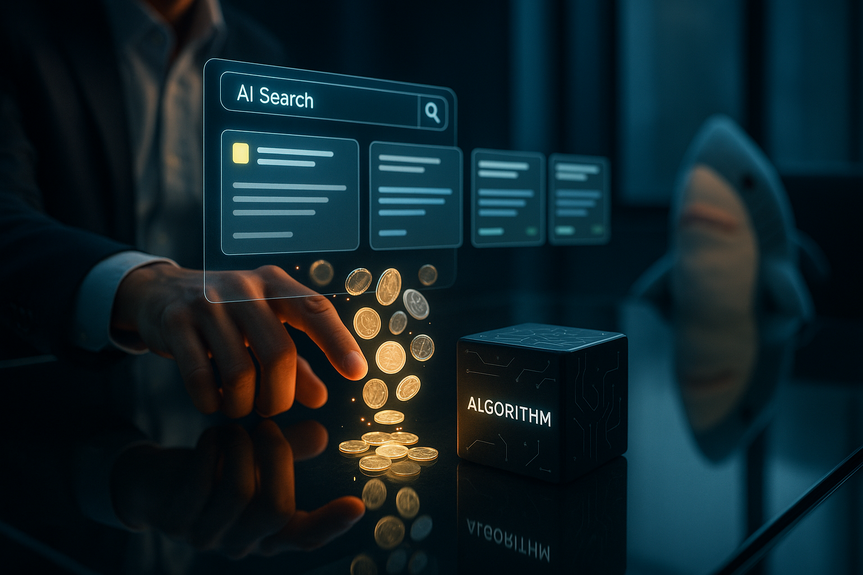
AI News
20 Nov 2025
Read 17 min
JPMorgan AI strategy 2025: How to gain an edge
JPMorgan AI strategy 2025 promises faster, smarter banking with personalized advice and lower costs.
What “fully AI-powered” really means
From narrow tools to agent teams
For years, banks used AI in narrow ways. A model scored credit. A system flagged fraud. Agentic AI is different. It can plan, call data, write drafts, and run tasks. It can hand off work to other agents. It can check results and try again. In banking, that could look like:AI woven into the bank’s “nervous system”
“Fully powered” is not one chatbot. It is AI stitched into the bank’s core. That means:Inside the JPMorgan AI strategy 2025
Customer service that feels instant
Imagine a help line where wait times drop and answers land fast. That is the promise when AI handles the first pass and routes the rest. AI can read the context, fetch the facts, and draft clear replies. It can spot emotion and flag calls that need a person. It can also suggest the next best action based on signals. Over time, service should feel more personal and more consistent.Smarter lending and wealth advice
AI can help underwriters read many signals at once. It can surface patterns that point to risk or chance. It can draft memos and explain the drivers. In wealth, AI can scan markets, taxes, and client goals to suggest ideas. Humans still approve. But the work gets a head start.Fraud, AML, and cyber defense on offense
Criminals move fast. AI can move faster. It can spot odd links in networks and new tricks in payments. It can score alerts and rank the most urgent. It can help analysts write reports and keep audit trails clean.Trading, research, and operations
Markets teams live on data. AI can summarize research, extract facts, and test scenarios. It can watch for errors and reconcile data between systems. In the back office, it can match trades, fix breaks, and cut rework.Software, data, and model governance
The bank writes a lot of code. AI can speed that up with safe code assistants that follow bank rules. It can help test, document, and deploy. A strong data layer and a model registry keep things safe and traceable.What this means for customers, employees, and investors
For customers: faster help and clearer choices
You should see faster answers and fewer mistakes. Bills, transfers, and disputes should resolve quicker. Offers should fit your goals better, not just push products. AI can also help explain fees and rates in simple words. Trust builds when service is fast and clear.For employees: less grunt work, more judgment
Many roles may shift. AI will take drafts, summaries, and data pulls. People will check, decide, and guide. Training will matter. Staff will learn to steer agents, read model limits, and fix edge cases. Teams that blend domain skill with AI skill will win.For investors: efficiency and resilience
Margins improve when cycle times fall and errors drop. Risk-adjusted returns can rise if models catch early signals. But cost will go up at first, due to data, compute, and talent. Strong governance will protect the franchise. Over time, a well-run AI bank can be more resilient.The big risks and the guardrails that count
Hallucinations and bad actions
Language models can make things up. Agents can take the wrong step if the prompt is unclear. Banks must box in agents with rules and scopes. They must log all actions. They must require human checks on decisions that affect money, credit, or compliance.Bias and fairness
Models can learn bias from data. That can hurt groups in lending or service. Banks need tests for fairness. They need methods to explain decisions. They need ways to fix drift when data changes. Regulators will focus here.Privacy, security, and vendor risk
Customer data is sacred. AI must follow strict data rules. No sensitive data should hit open tools. Access must be tight. The bank must vet third-party models and APIs. It must plan for outages and cyber risk.Model risk management, now for agents
Banks already have MRM programs. They will need to extend them to genAI and agents. That means model inventories, validation, back-testing, change control, and clear owners. It also means training staff to review prompts and outputs with care.Explainability and documentation
Regulators expect clear records. Who asked what? Which model answered? What data did it use? Why did it suggest an action? AI systems must keep a trace. They must produce reasons a human can read.How rivals may respond
Big banks will copy the parts that work. They will test agent teams in service and operations first. Regional banks may partner with vendors to move faster. Fintechs will highlight speed and niche focus. Cloud providers and AI labs will court banks with secure stacks. Competitors will study the JPMorgan AI strategy 2025 and pick their battles. Some will push hard on service. Others will push on risk. Many will try to catch up on data quality, which is the real moat.What to watch in the next 12 months
Signals of real progress
Signals of trouble
A simple playbook for banks and fintechs
Start with high-value, low-risk workflows
Pick use cases with clear rules and human checks. Service triage, document processing, and operations are good starts. Measure speed, accuracy, and customer impact.Clean data and strong identity
AI is only as good as its data. Fix data quality, lineage, and access. Build robust identity and permissions. Protect sensitive fields. Create a “golden source” for core entities.Governance you can show your board
Stand up an AI risk framework. Define allowed models, use cases, and red lines. Track prompts and outputs. Set review gates for high-risk actions. Train teams and test plans.Human-in-the-loop by design
Decide where people must approve and where AI can act. Build user interfaces that show sources, reasons, and options. Make it easy to correct the AI and learn from fixes.Culture and training
Teach every function how to use AI safely. Reward teams that document and share lessons. Create “AI champions” across business lines. Keep it simple: one-page playbooks beat long decks.Why this moment matters
Banking moves on trust, speed, and scale. AI can help on all three if used with care. It can cut waiting and errors. It can spot risk earlier. It can free people to focus on judgment and empathy. But it needs strong rules and clear lines. It also needs patience. Early wins will be small, but they build a base for bigger gains. We should not see AI as magic. It is software that predicts and plans. It makes mistakes. It needs clean data and human oversight. Banks that remember this will do well. Banks that forget will face fines, loss, or worse.The broader impact on the industry
Costs shift from branches to brains
As AI handles more routine work, branch networks may evolve. The focus will be advice, not paperwork. Digital channels will carry more weight. Investment will tilt toward data, models, and training.New jobs and new skills
Some tasks will fade. New roles will grow: prompt engineers, AI product owners, model risk reviewers, and data stewards. Frontline staff will use AI as a co-pilot. Managers will track AI metrics like they track revenue and loss.Competition on safety, not just speed
Banks will market safety and clarity. “We do it fast and we do it right.” Clear model cards, audits, and controls can be a brand edge. Customers will choose firms that earn trust with plain talk and solid results.Bottom line: a high bar and a real chance
JPMorgan’s push sets a high bar. The bank has scale, data, and talent. If it builds strong guardrails and delivers clear wins, others will follow. If it stumbles, the whole sector will slow down. The smartest path is bold but careful: start where value is clear, govern tightly, and learn fast. Competitors and partners are watching the JPMorgan AI strategy 2025 because it could define how big finance uses agentic AI at scale. Customers should expect faster help and clearer choices. Employees should expect new tools and training. Investors should watch for real metrics, not hype. If the bank gets this right, it will raise the standard for service and safety across the industry. In the end, the JPMorgan AI strategy 2025 is not only a tech plan. It is a bet on better decisions, better service, and better control. The banks that match that ambition with discipline will shape the next decade of finance.(Source: https://www.wbur.org/onpoint/2025/11/19/jpmorgan-embrace-of-ai-banking-future)
For more news: Click Here
FAQ
Contents






